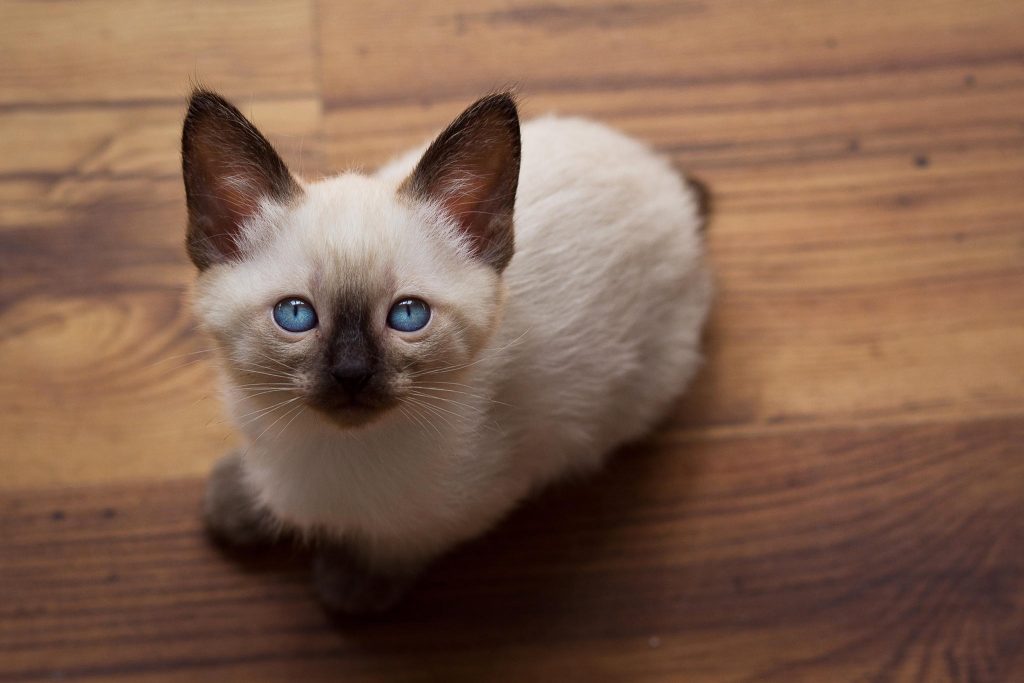
Mekong Bobtail: An In-Depth Overview
The Mekong Bobtail cat is a unique and enchanting breed, instantly recognizable by its striking blue almond-shaped eyes and distinctive bobbed tail. Combining the sleek elegance of the Siamese with a playful, almost dog-like personality, these cats are as affectionate as they are beautiful. This article explores the origins, characteristics, care requirements, and the captivating personality of the Mekong Bobtail, shedding light on why they make such wonderful companions.
The Origins and History of the Mekong Bobtail
The Mekong Bobtail traces its roots to the regions surrounding the Mekong River, which flows through Southeast Asia. This breed is part of the broader group of Asian bobtail cats, and it has a rich history intertwined with the cultures of Thailand, Laos, Cambodia, and Vietnam. These cats were once considered sacred and were often kept in temples. The breed was officially recognized in the late 20th century, and since then, it has grown in popularity among cat enthusiasts worldwide.
Physical Characteristics of the Mekong Bobtail
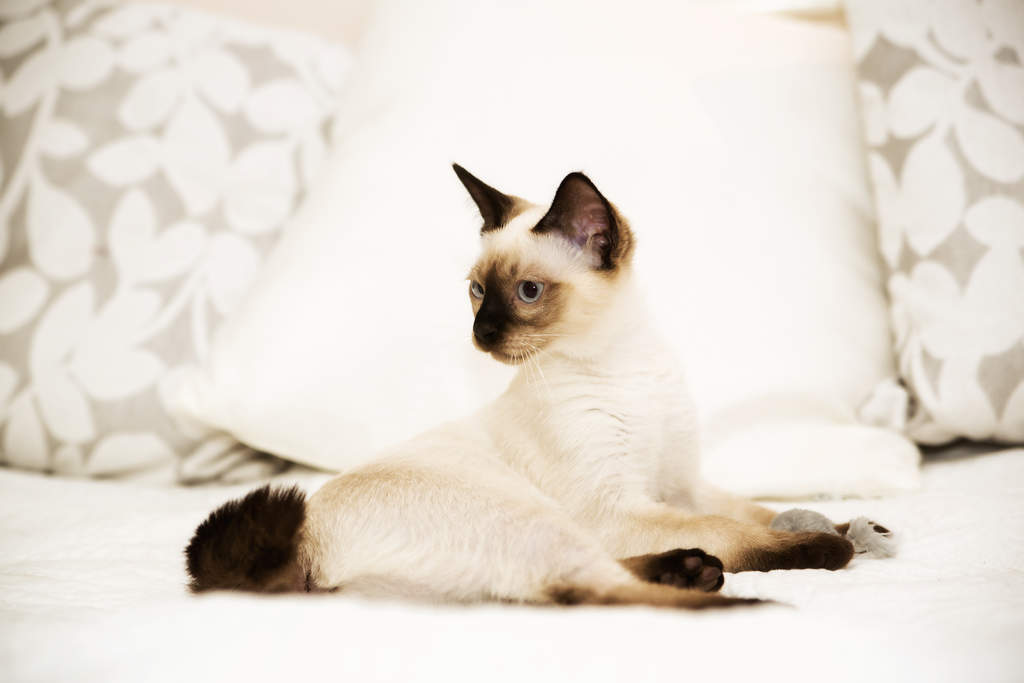
The Mekong Bobtail boasts several distinctive physical features that make it stand out:
Eyes
One of the most captivating features of the Mekong Bobtail is its deep blue, almond-shaped eyes. These eyes give the cat an expressive and almost mystical appearance, reflecting its intelligent and curious nature.
Coat
The coat of the Mekong Bobtail is short and silky, with a fine texture that lies close to the body. These cats come in a variety of colors and patterns, often reminiscent of the traditional Siamese markings, including seal point, blue point, and chocolate point.
Size
Mekong Bobtails are medium-sized cats, with males typically being slightly larger than females. They have a well-muscled, athletic build, which contributes to their agile and active nature.
Life Expectancy
The life expectancy of a Mekong Bobtail is generally between 12 to 16 years, although with proper care, some can live even longer. These cats are known for their robust health and longevity.
The Unique Personality of the Mekong Bobtail
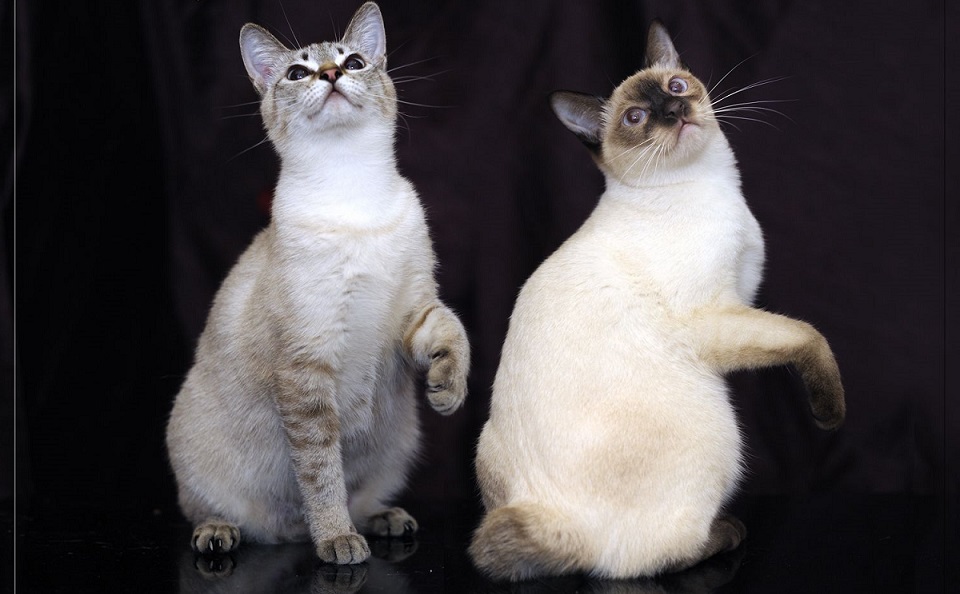
Mekong Bobtails are renowned for their playful, affectionate, and dog-like personalities. They form strong bonds with their human families and enjoy being involved in daily activities. These cats are known for their chirpy voices and will often «talk» to their owners, responding to conversations with a series of trills and meows.
Their intelligence makes them highly trainable, and many Mekong Bobtails enjoy playing fetch or learning tricks. They are also known for their curiosity and love exploring their environment, making them excellent companions for interactive play.
Caring for Your Mekong Bobtail
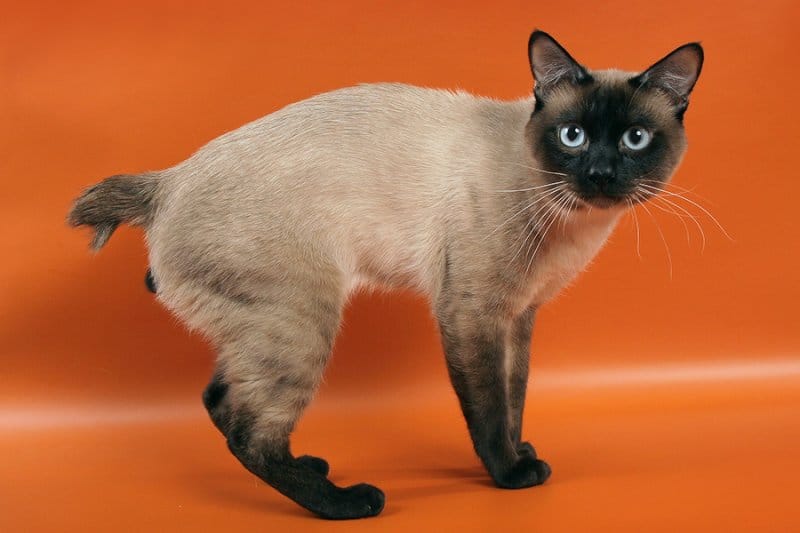
Caring for a Mekong Bobtail involves regular grooming, attention to health, and providing a stimulating environment. Their short coat requires minimal grooming, but weekly brushing can help keep it in top condition and reduce shedding.
Regular veterinary check-ups are essential to ensure they remain healthy and to catch any potential issues early. Mekong Bobtails are generally healthy cats, but like all breeds, they can be prone to certain genetic conditions, so maintaining a good relationship with your vet is crucial.
Diet and Nutrition for Mekong Bobtail Cats

A balanced diet is essential for keeping your Mekong Bobtail healthy and happy. High-quality commercial cat food, whether wet or dry, should provide the necessary nutrients. Look for foods that list meat as the primary ingredient and avoid those with excessive fillers or artificial additives.
It’s also beneficial to supplement their diet with occasional treats like cooked chicken or fish, but always avoid toxic foods like onions, garlic, and chocolate. Fresh water should be available at all times to keep your cat hydrated.
Creating the Ideal Environment for a Mekong Bobtail
Mekong Bobtails thrive in environments where they can explore and play. Providing plenty of toys, scratching posts, and climbing structures will keep them entertained and physically active. They enjoy interactive play, so engaging with them using feather wands or laser pointers can help satisfy their hunting instincts and strengthen your bond.
These cats also appreciate cozy spots for resting, such as cat beds or sunny windowsills. Ensuring they have a variety of comfortable resting places can help them feel secure and content in their home.
Common Health Issues in Mekong Bobtail Cats
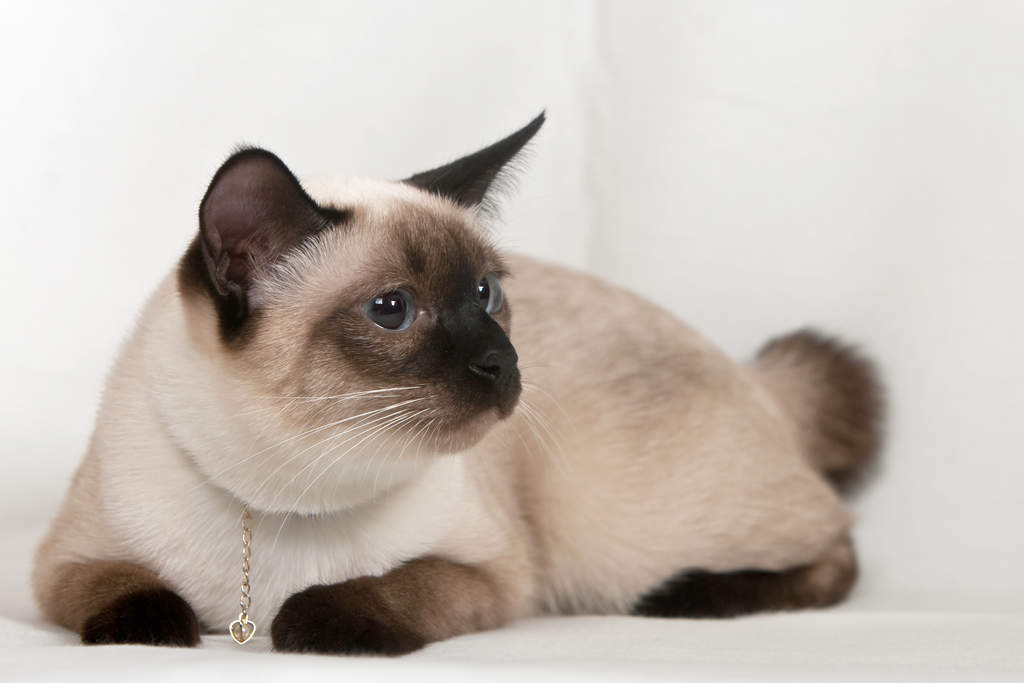
While Mekong Bobtails are generally healthy, they can be susceptible to certain genetic conditions common in their breed. Regular veterinary check-ups can help detect and manage any health issues early. Some potential health concerns include:
- Dental Problems: Regular dental care, including brushing and dental treats, can help prevent periodontal disease.
- Obesity: Maintaining a healthy diet and encouraging regular exercise can prevent weight-related health issues.
- Heart Disease: Regular vet visits can help monitor and manage any signs of heart conditions.
Why Choose a Mekong Bobtail Cat?
Choosing a Mekong Bobtail cat means welcoming a lively, affectionate, and intelligent companion into your home. Their unique combination of elegance and playful personality makes them ideal pets for families and individuals alike. Whether they are chirping at you with their expressive voices or cuddling up for a nap, Mekong Bobtails bring joy and warmth to any household.
The Allure of the Mekong Bobtail
The Mekong Bobtail is a breed that captivates with its beauty and charms with its personality. From their striking blue eyes to their affectionate nature, these cats are truly special. Whether you’re a seasoned cat owner or new to the world of feline companionship, the Mekong Bobtail is sure to bring endless joy and companionship into your life. If you’re looking for a cat that combines elegance, intelligence, and a playful spirit, look no further than the enchanting Mekong Bobtail.
Frequently Asked Questions
Do Mekong Bobtails require a lot of grooming?
Mekong Bobtails have short to medium-length fur that requires minimal grooming compared to long-haired breeds. Weekly brushing is usually sufficient to remove loose hair and prevent shedding. Additionally, their nails should be trimmed regularly, and their ears should be checked and cleaned as needed to prevent wax buildup and infections.
Are Mekong Bobtails good with children and other pets?
Yes, Mekong Bobtails are known for their friendly and sociable nature, making them excellent companions for families with children and other pets. They are playful and affectionate cats that enjoy interacting with people of all ages and getting along well with other animals.
Mekong Bobtail video
